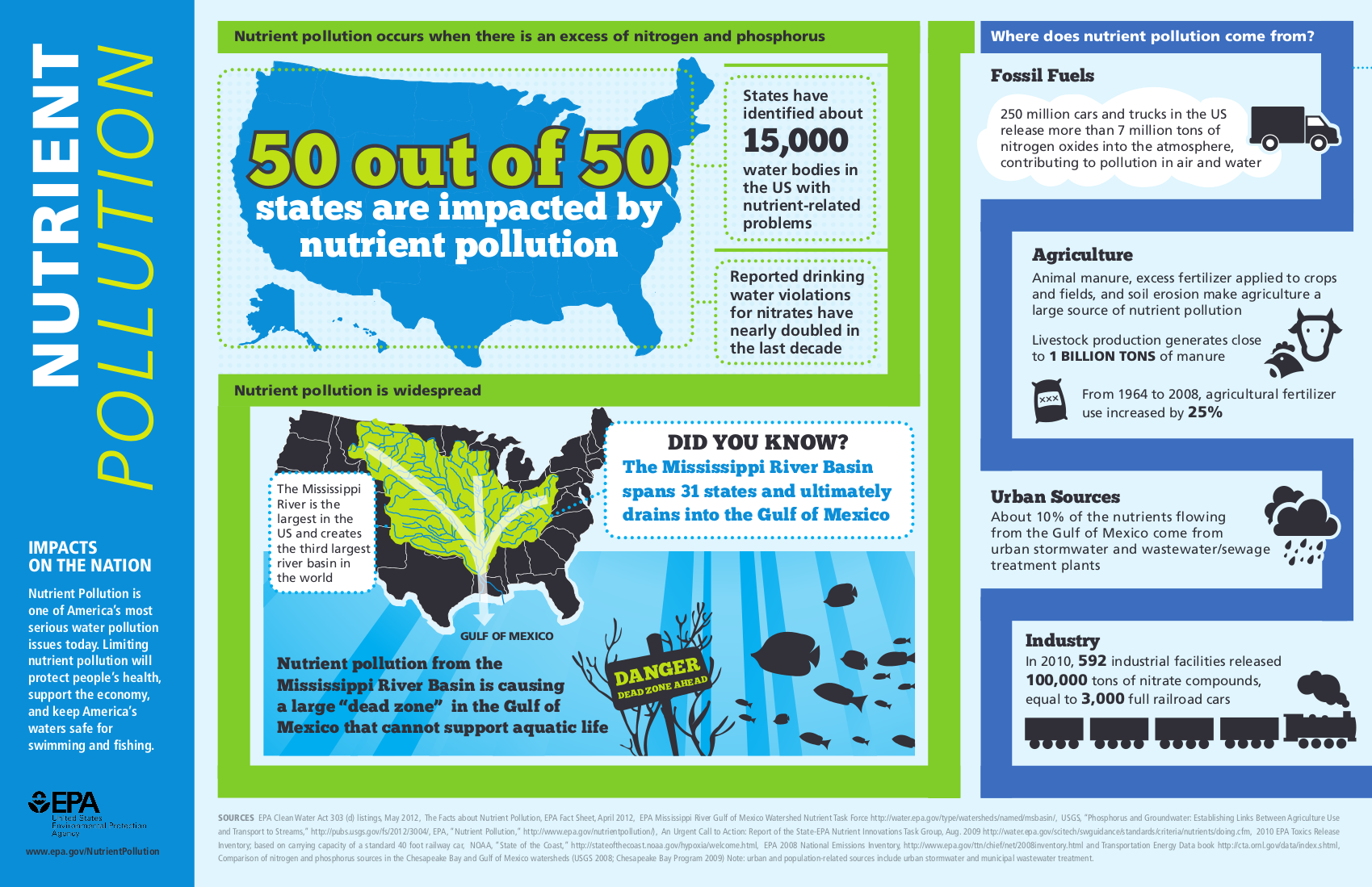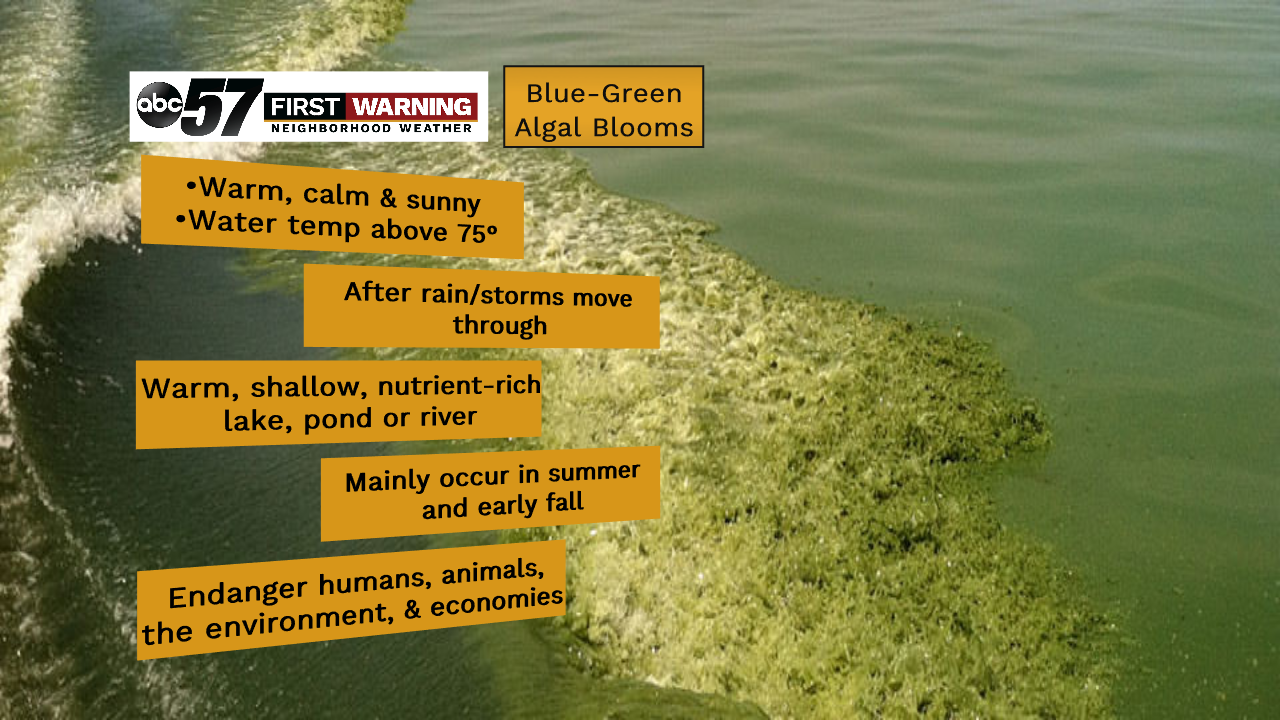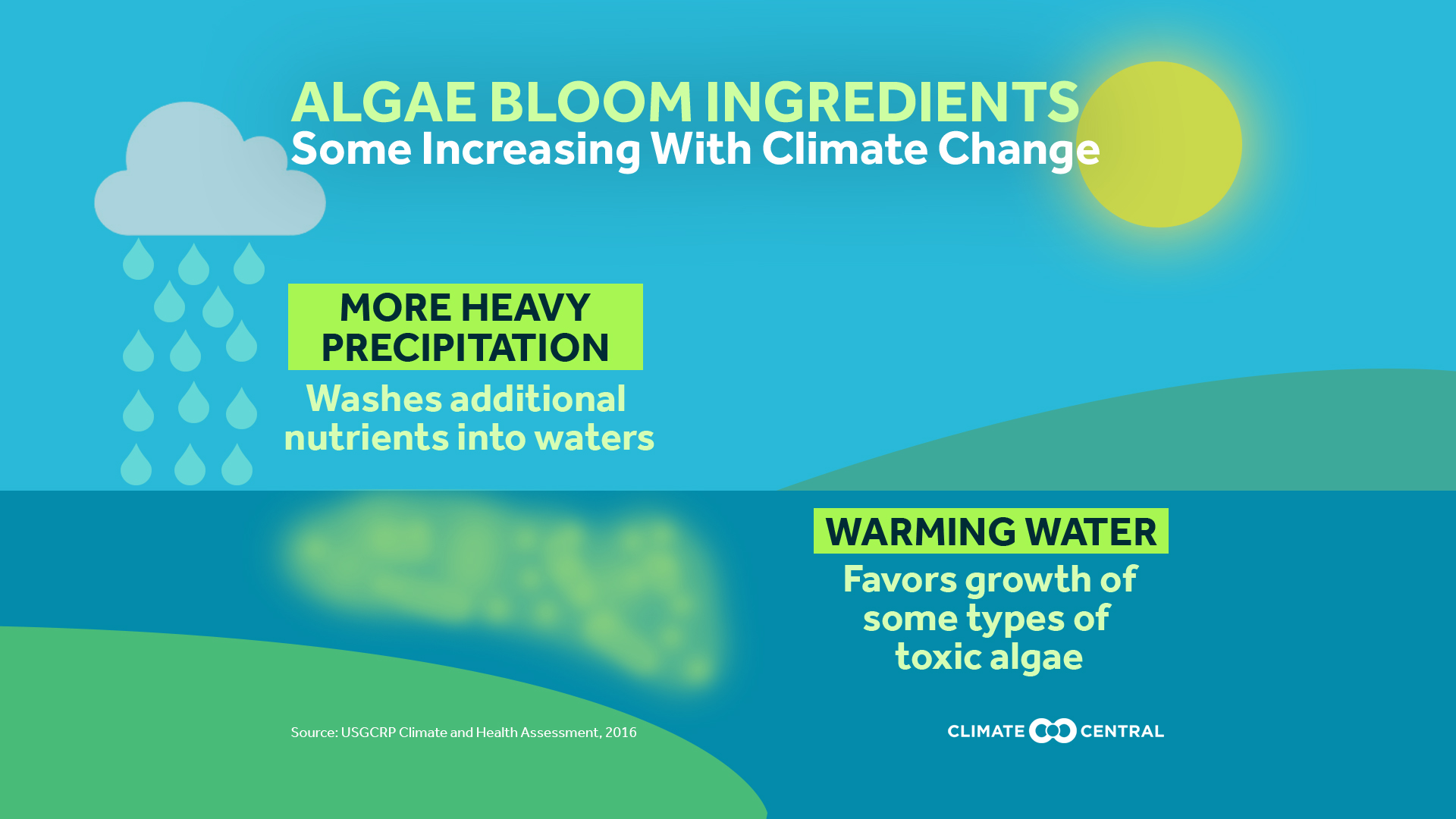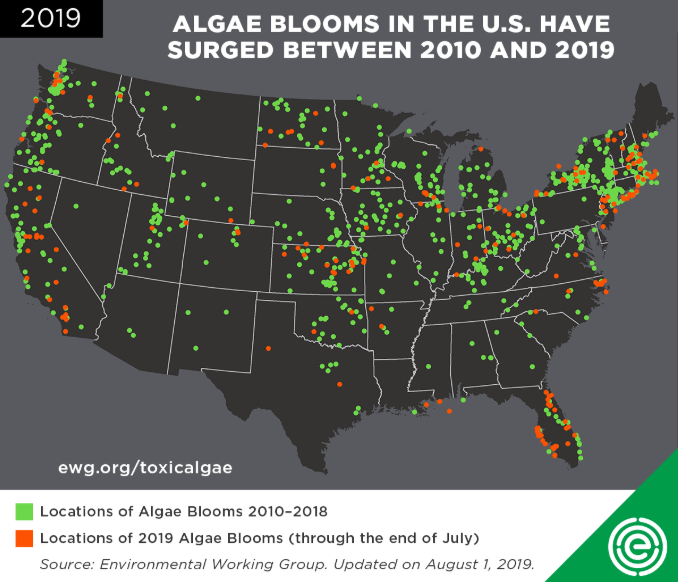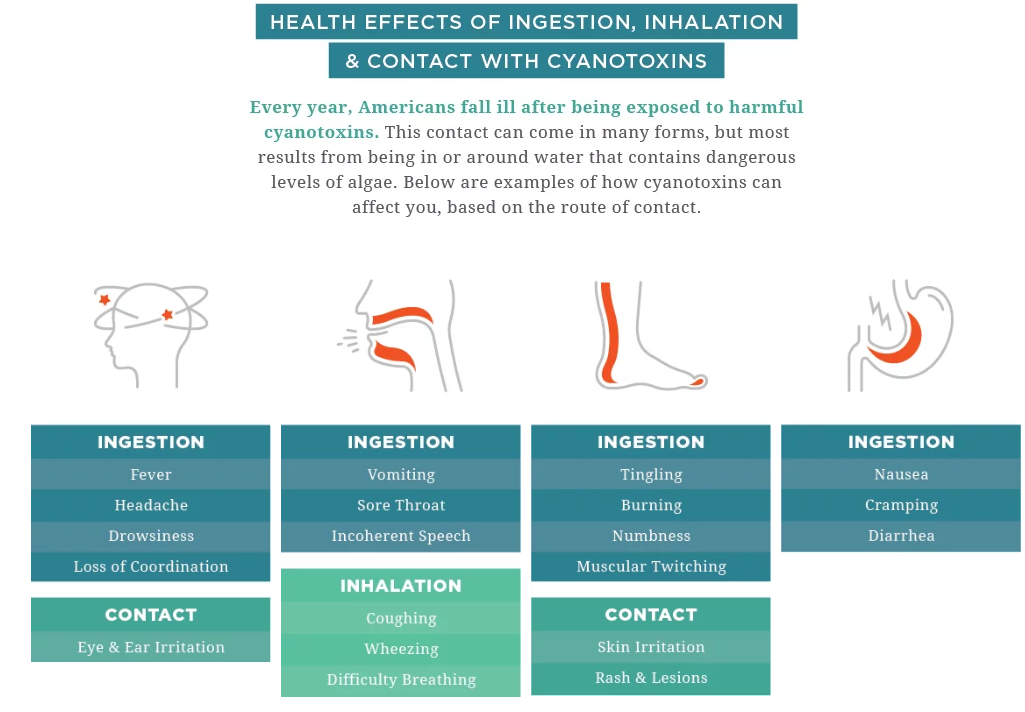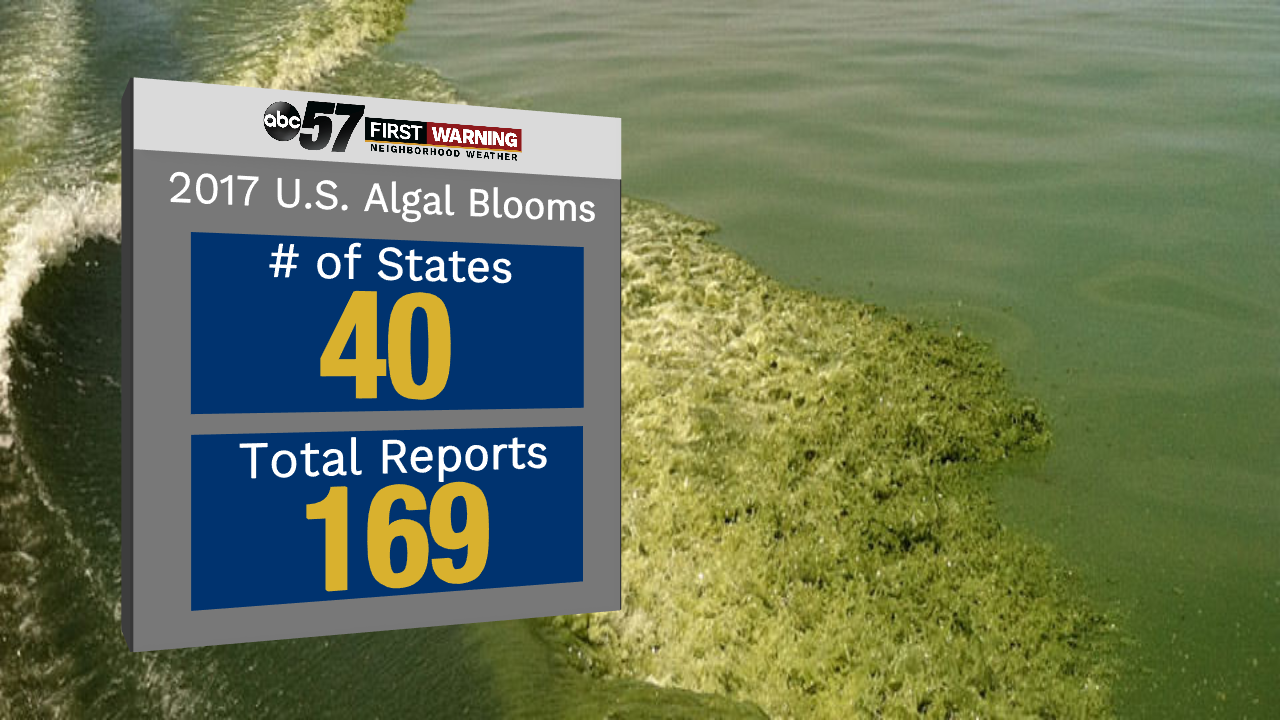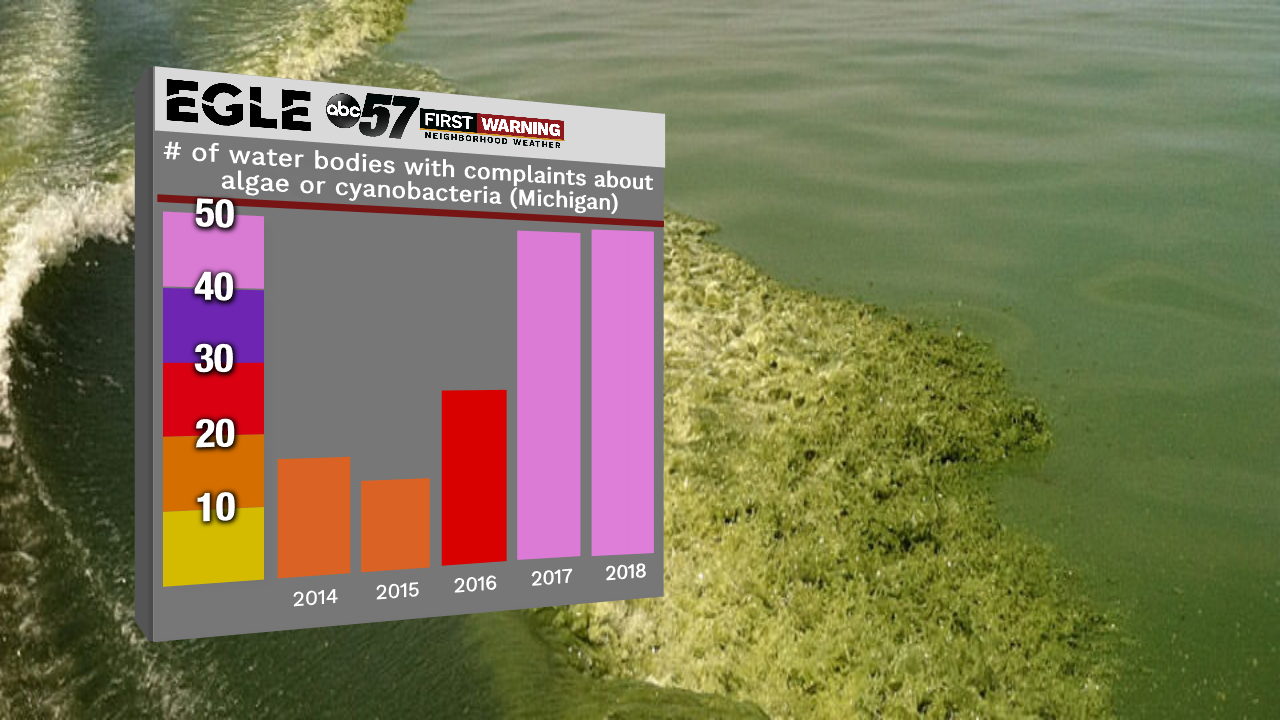Harmful algae blooms will only get worse, more widespread
On the heels of the tragic deaths of three dogs in North Carolina, algal blooms have re-entered the national spotlight. And it's with good reason as they can be dangerous to humans, animals, the environment, and economies. They also happen to peak in late summer and early fall.
There are multiple types of algal blooms, and most of them are harmless. However, there are a few that pose a significant threat, including the blue-green algae bloom. These are also referred to as harmful algae blooms (HABs), or toxic algae blooms.Despite their name, they actually aren't algae at all. Blue-green algal blooms are actually made up of photosynthetic single-celled organisms called cyanobacteria. These cyanobacteria create a byproduct called microcystin, which is highly toxic to people and animals.
These blooms can happen in nearly any body of water, but they thrive in warm, shallow and nutrient-rich lakes, ponds, rivers, and streams.They also prefer warm to hot temperatures, calm winds and sunshine. If these conditions are in place following a decent rain, the chance of a harmful algal bloom developing rises substantially.
The problem is it's not always easy to identify a blue-green algal bloom. Sometimes it's simply impossible. But there are things you can keep in mind:- Can look like pea soup or spilled paint that has streaks of color (in the water)
- Can look like dried mats or scum (on the shore)
- Can be many colors including green, white, tan, blue, purple or brown
- Is usually evenly dispersed in the water
- Bad smell near the bloom
- Eerily quiet conditions at a body of water can be a sign of a toxic algal bloom
Potential health effects in humans range from fever and headache to vomiting, sore throat, diarrhea, and wheezing. Health effects in animals include lethargy, seizures, changes in behavior, diarrhea, vomiting, and stumbling, according to the Environmental Working Group.
The big question you may be asking is whether or not we should be concerned about these dangerous blue-green algal blooms. Well, in short, the answer is yes. At least to an extent. As mentioned above, they can occur in most bodies of water. And Michiana has plenty of those.While some bodies of water are monitored for algae-related problems, not all of them are. So be sure to heed any signage that may be posted at a given location, in addition to using your own judgment.
Multiple water bodies in both Indiana and Michigan have experienced an algae bloom at some point between 2010 and 2019. The map above pinpoints most of them, some of which have been blue-green/toxic/harmful. It's important to note that not all blooms are made public; some even go unnoticed. So it's very possible that there are other bodies of water locally that have experienced/could experience a potentially harmful algal bloom.This is especially true going forward as climate change provides warmer air temperatures, increased heavy rain events, higher drought chances, and warmer water temps.
Those factors help support the formation and growth of toxic algal blooms. The chance of one of these blooms occurring is also higher if the body of water in question is susceptible to the runoff of nutrients like phosphorous, nitrogen and carbon from yards and farmlands.When rain falls and washes those nutrients into a body of water, they can "overfeed" the algae normally present in the water, sometimes leading to harmful algal blooms.
In short, be very cautious with any lake, pond, river, stream, or even puddle through the fall. If something seems "off," -- even in the least bit -- treat it as though toxic algae are present.

